I spent an unforgettable month in Japan during the cherry blossom season in April 2023. This was my fifth trip to Japan in the last decade, however, most of those previous trips were snow trips, with not as much time spent exploring the cities.
As the first stop on our big 5-month world adventure, my husband and I made it a mission to track everything we spent in Japan over 4 weeks. While most people may have a perception that Japan is an expensive country to visit, I think the cost of travel to Japan is not as expensive as you might think.
In this article I reveal our exact Japan trip cost, breaking it down by categories along with tips for how to plan your own Japan travel budget and ways you can save money.
Let’s get into the numbers!
How Much is a Trip to Japan? Summary Japan Trip Cost Breakdown
Crunching the numbers, in short, my month-long trip to Japan in April 2023 cost around ¥850,000 total for two adults.
At today’s exchange rates, that’s just shy of AUD $8.5k total or AUD $315 per day for two people.
However, at the time of writing this article in May 2024, the Yen is at a record decade high relative to the Australian dollar. Unfortunately for me, my trip actually cost me closer to AUD $10k total at the time.
I think this is my sign to book another trip?!
The majority of my readers are based in Australia, so I’ll refer to the Australian dollar as my primary currency, but for reference here are the equivalent costs (for two people) at today’s exchange rates:
- AUD $315 per day
- USD $210 per day
- EUR €195 per day
Let’s break that down by category:
| Category | Total Cost (JPY) | Total Cost (AUD) | Cost per day (2 people, AUD) |
| Accommodation | ¥336,800 | $3,200 | $120 |
| Food & Drink | ¥305,800 | $2,900 | $109 |
| Transport | ¥113,600 | $1,150 | $43 |
| Activities & Attractions | ¥20,400 | $390 | $14 |
| Souvenirs & Shopping | ¥34,000 | $330 | $12 |
| Miscellaneous (luggage storage, laundry) | ¥9,100 | $87 | $3 |
| Car Rental | ¥26,000 | $251 | $9 |
| eSIM | ¥7,900 | $76 | $3 |
| Total | ¥853,600 | $8,384 | $313 |
Note that I have excluded the costs of flights for two reasons.
- We flew one way from Australia to Japan and then flew from Japan to Europe so the costs aren’t a good benchmark for a return trip.
- Flight prices are very dependent on the time of year, and location you are flying from. Generally speaking, expect flight prices to be the highest during the cherry blossom season (March-April) and over the Christmas period.
Traditionally, I’ve been able to get return flights around the $800 – 1,200 from Perth, Western Australia for previous trips.
I’ve also excluded the cost of our travel insurance, as we had purchased a 5-month policy from Covermore (my go-to travel insurance provider in Australia) to cover our entire trip.
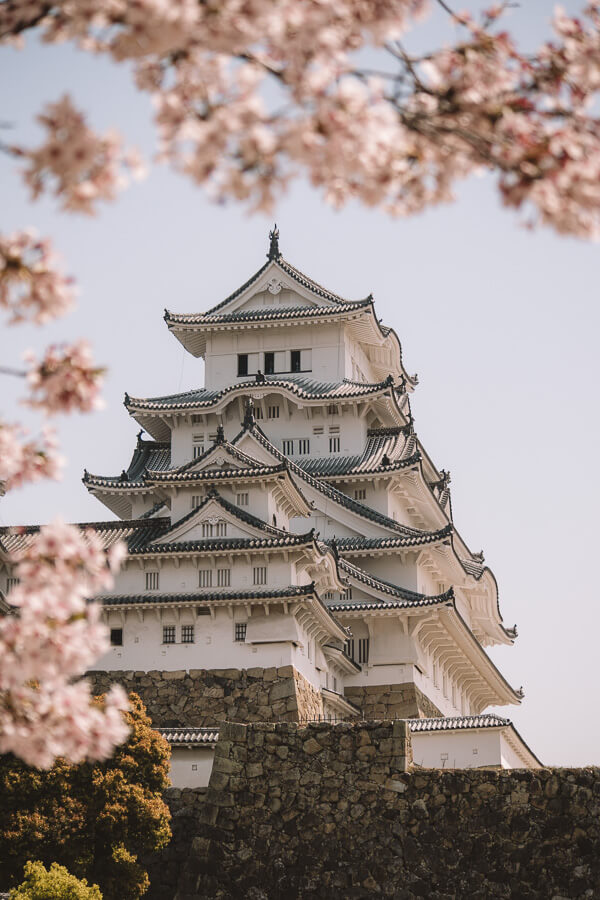
Accommodation
Accommodation will likely be your biggest expense for your trip to Japan.
Hotels are fairly expensive for the size of the rooms. I’ve stayed in many cheap Japanese business hotels which were clean and comfortable, but basically were just slightly larger than a shoebox!
Accommodation accounted for about 40% of our budget for our 4-week trip at an average cost of $120 per night for the two of us. We stayed in a mixture of hostels (private rooms), guesthouses, boutique hotels, and business hotels and had one splurge night at a ryokan (which cost $600 for one night!).
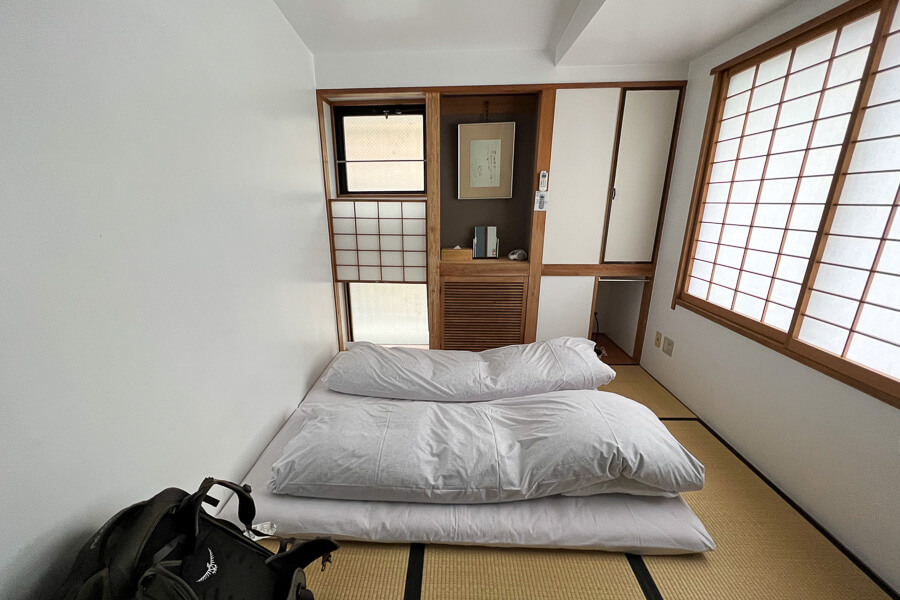
To save on accommodation, we often stay at guesthouses or private rooms in hostels that come with shared bathroom facilities as they tend to be spotlessly clean in Japan.
Some of my favourite budget accommodation from our recent trip included:
- Kimi Ryokan Guesthouse in Tokyo (I’ve stayed here 3 times now!)
- Hotel Sobial Namba in Osaka
- Hotel Pacific in Kanazawa
- Hostel Michikusa-ya in Kawaguchiko (which came with a view of Mt Fuji!)
The most expensive accommodation (in terms of value for money) I’ve found is Kyoto – and that was staying in TINY rooms, albeit in convenient locations.
To save money on accommodation in Japan, consider staying at business hotel chains.
You’ll find these across the country. They offer good value accommodation if you’re looking for a clean, comfortable and affordable place to sleep at night, but also have extra facilities like coin-operated laundry machines and even provide pyjamas at some of them!
Common chains to look out for include APA Hotel, Daiwa Roynet Hotel, Dormy Inn, Tokyo Inn and my new favourite, Via Inn. We stayed at three different Via Inn properties on my last trip alone! (Two in Osaka, and one in Tokyo).
I use booking.com to book all my accommodation in Japan, filtering for properties with a rating score of over 8.0 and making sure to find accommodation that is close to a subway station (in cities like Osaka and Tokyo).
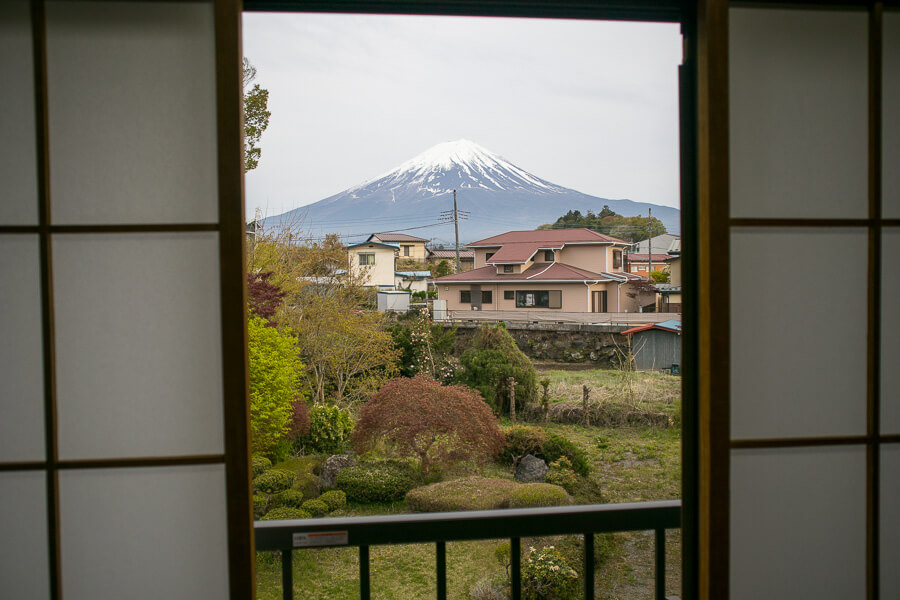
I haven’t stayed in a capsule hotel in Japan, simply because I’ve always been travelling with my husband who is 196 cm tall and doesn’t fit in them! But they look like a fun and unique way to save on accommodation, especially if you’re travelling solo.
Tip: When booking accommodation in Japan, it’s common to find that many properties only take bookings from 6 months out. So if you’re searching quite far in advance, you may not see any availability.
Food & Drink
Food and drink were the next biggest expense of our trip. however, I don’t think eating out in Japan is expensive – for what you pay the food is of high quality. The reason for our “high” spend in this category is that when I travel Japan, I do NOT hold back on eating and drinking.
Now I’m not paying hundreds of dollars for fancy dinners, but I do eat a lot, and eat very well. It’s one of my favourite things about Japan. From fresh sashimi, melt in your mouth wagyu beef to rich bowls of ramen – the food in Japan is next level.
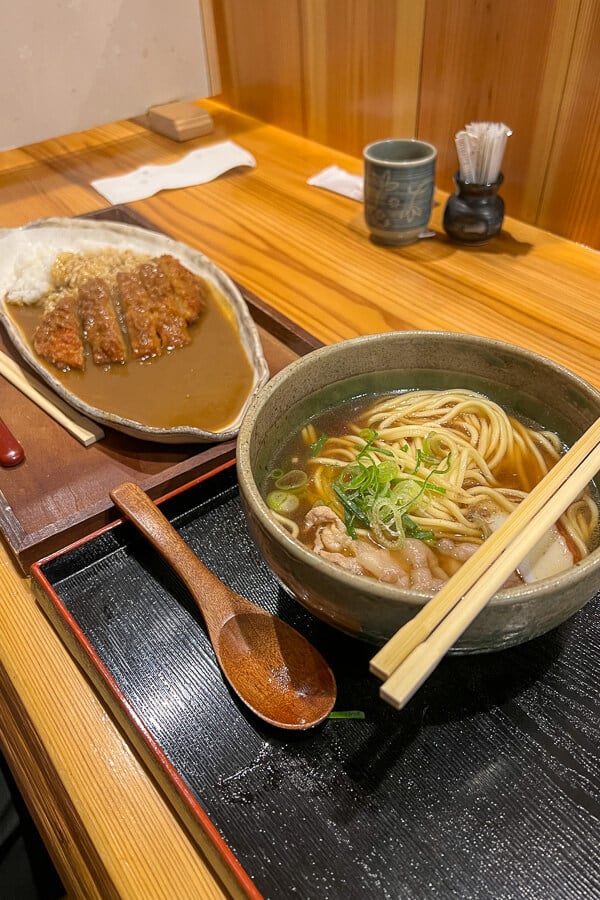
We averaged $109 per day for two people or 35% of our budget on eating and drinking. This might be higher than the normal traveller, given our tastes and the fact that eating out in Japan is as much an activity for us as visiting a castle or temple.
However, there were also many nights when after getting over 20,000 steps in, or after our MASSIVE day at Universal Studios Japan in Osaka, we couldn’t bring ourselves to head out for a proper dinner.
This is where the amazing Japanese Konbini comes in – we love grabbing a cheap and cheerful dinner from the nearest 7/11 or Lawsons, which you can heat and take back to your nearby hotel.
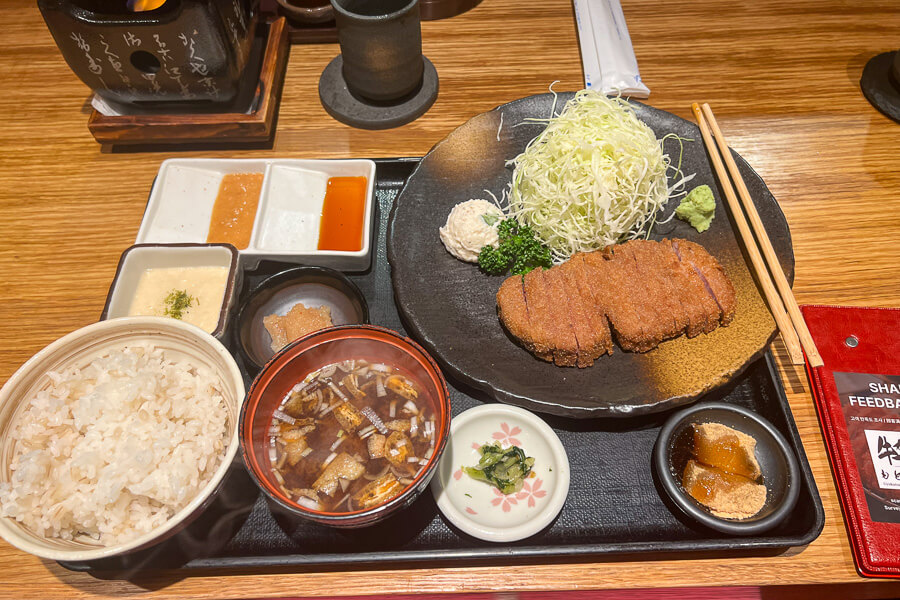
As self-proclaimed coffee snobs, we also tend to treat ourselves to at least one or two single-origin filter coffees in Japan per day. I’m almost embarrassed to say it, but on our most recent trip, we spent nearly $50 on a VERY special coffee at Glitch in Osaka.
We’re also avid sake lovers, and went all-in on the sake tastings and visiting quite a few sake bars. Some personal favourites that I’ve shared in my Osaka itinerary and Tokyo itinerary were Sake Bar Shiki in Osaka and Yata Yata in Shinjuku, Tokyo.
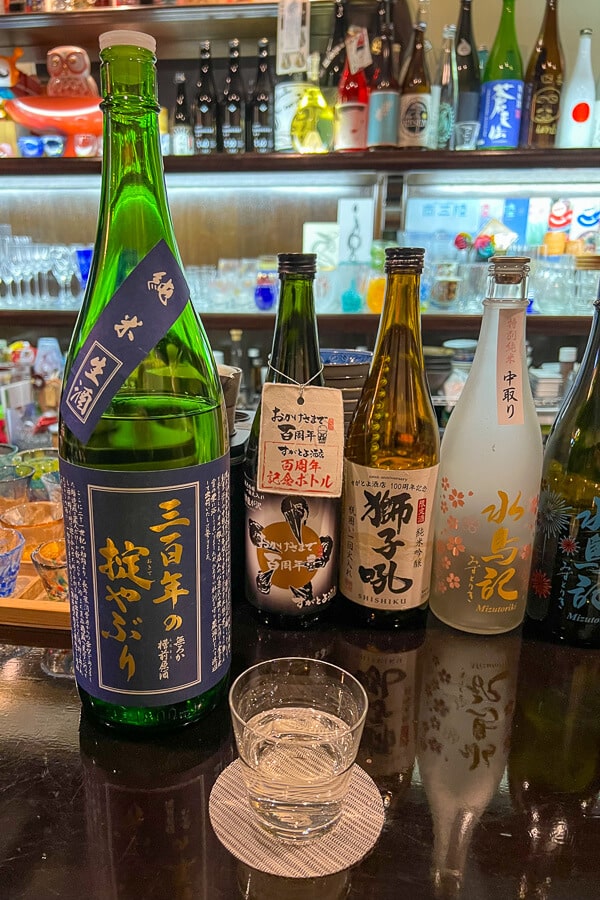
Comparing our spend on alcohol vs coffee, I can confirm we spent more on coffee than alcoholic drinks… Which I think says enough about us – ha!
Transport
Your next biggest expense is likely to be transport, which cost us $43 per day and made up 14% of our total spend.
This was made up of a combination of using the subway within cities like Tokyo and Osaka, long-distance Shinkansen train rides between cities, the airport train from Narita and highway buses between towns like Kanazawa and Takayama.
You’ll be heavily reliant on the efficient public transport system in Japan, but it isn’t necessarily cheap.
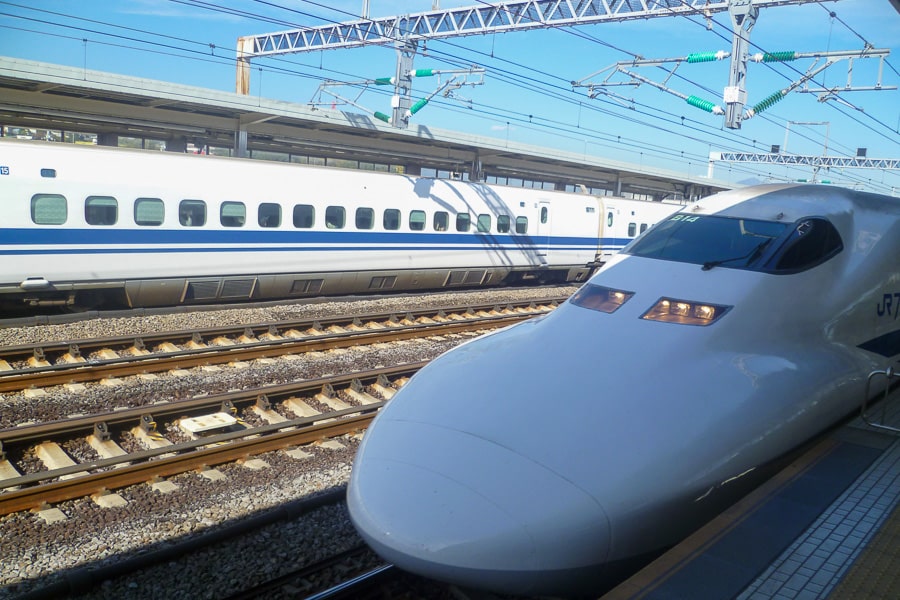
If you’ve read my Things to Know Before Visiting Japan guide, you’ll know I don’t recommend getting a JR Pass anymore after a significant price rise in October 2023.
Simply buy individual tickets for the Shinkansen. You can do this:
- In person at the station on the day (or a few days beforehand) using the ticket machines (in English) or at the ticket office; or
- on the SmartEx app (certain routes only); or
- purchasing in advance online through Klook (although prices may be slightly higher than buying them in person, but you are paying for the convenience)
Activities and Attractions
Next up are activities and attractions, which averaged out at $14 per day for the two of us, or 5% of our budget which I think is fairly low,
Our big ticket item was our tickets to Universal Studios Japan, but other than that most of our other ticket costs were in the $10 – $20 range.
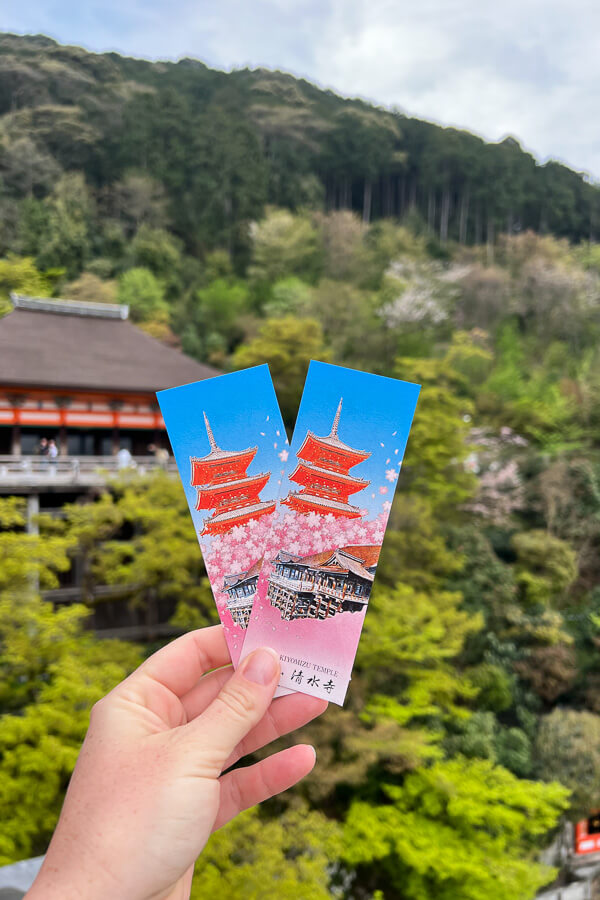
This included entrance fees to the many castles, temples and gardens we visited, as well as our tickets to the Fuji Shibazakura Festival and Shibuya Sky.
There are lots of free things to do in Japan and many ways to fill your days that don’t cost the earth.
Whether it’s wandering the buzzing electric town of Akihabara in Tokyo or hiking under the thousand torii gates at Fushimi Inari in Kyoto, there’s lots of fun activities you can do at zero or low cost in Japan.
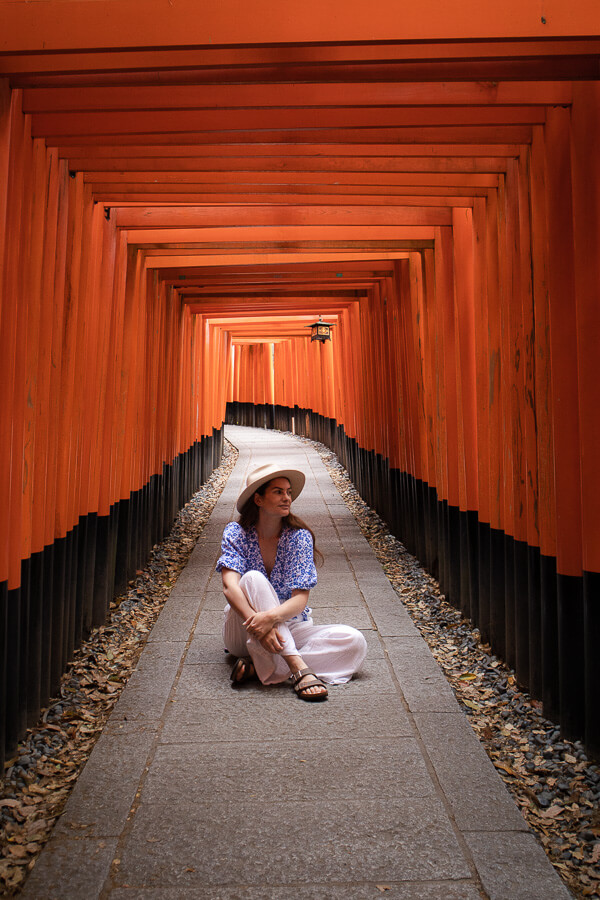
Shopping
Ahh, shopping in Japan. It’s probably a good thing Japan was the first stop on our 5-month world adventure, which meant we couldn’t physically buy too much otherwise we’d spend the next 4 months lugging it around in our backpacks!
Even then, we had to mail a small package home of some of our favourite Japanese souvenirs that we picked up on this trip (which included this beautiful sake set that we picked up at a sake brewery in Fuji Five Lakes!).
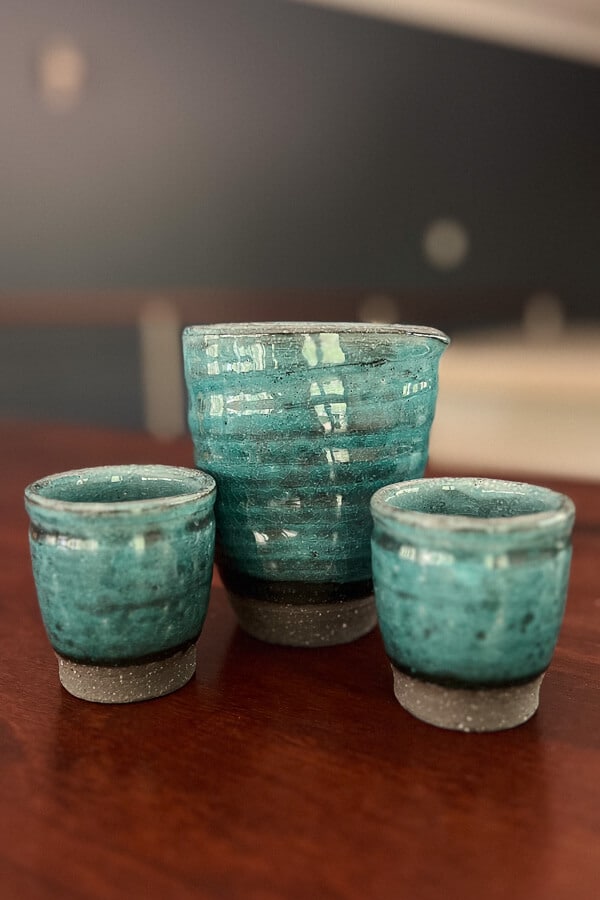
The shopping is awesome in Japan, full stop.
Whether it’s colourful anime figurines, unusual flavours of Kit Kats, Japanese skincare or vintage clothes, I’d recommend making sure you leave some room for the inevitable purchases you will make during your time in Japan.
We spent $12 per day (averaged over a month though, keep in mind), which was 4% of our total spend.
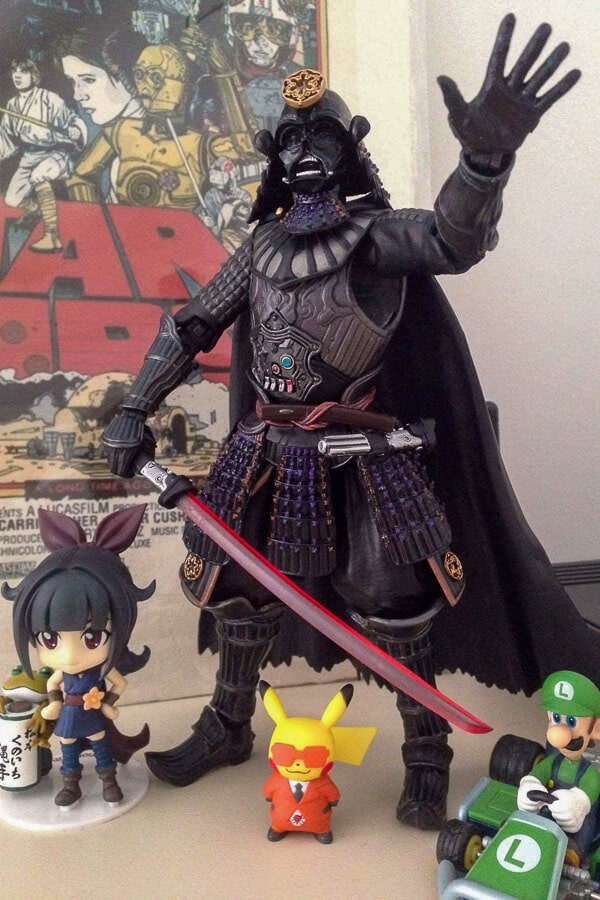
eSIMS
For me, staying connected in Japan is essential.
I rely on Google Maps religiously to get around and to find the best restaurants and places to eat on the go. On this trip, this was our first time trying eSIMS (we’d previously used pocket WiFi and physical tourist SIMs), and I’m now an eSIM convert.
It’s a no-brainer to use eSIMs if you have an unlocked phone, as you can have internet access from the minute you step out of the plane and don’t have to fiddle around with changing physical SIM cards in your phone.

I used AirAlo and it was a seamless process to set up the eSIM for first-time use, and then to recharge it once I used all my data up very quickly (ha). I now use AirAlo for all my trips, but my husband used Ubigi in Japan and had no issues with them either.
You can check out AirAlo Japan plans here for comparison.
Between us, we spent $3 a day on data (just 1% of our spending).
Miscellaneous
This consists of small things like baggage storage at train station lockers, coin-operated laundry and luggage forwarding services between cities (another great hack when travelling in Japan).
This averaged out to $3 a day.
Car Rental
Wrapping things up, the last expense on our 4-week trip to Japan was a rental car in Kawaguchiko.
This was my first time renting a car in Japan, and I have never needed a rental before nor do I think it’s strictly necessary for you, even if you’re visiting Kawaguchiko.
However, as we had planned to go to the Fuji Shibazakura Festival and a few other sites out of town, we decided it was easier to hire a car than to catch infrequent buses.
Car rentals are fairly expensive – we paid $250 for a 3-day hire.
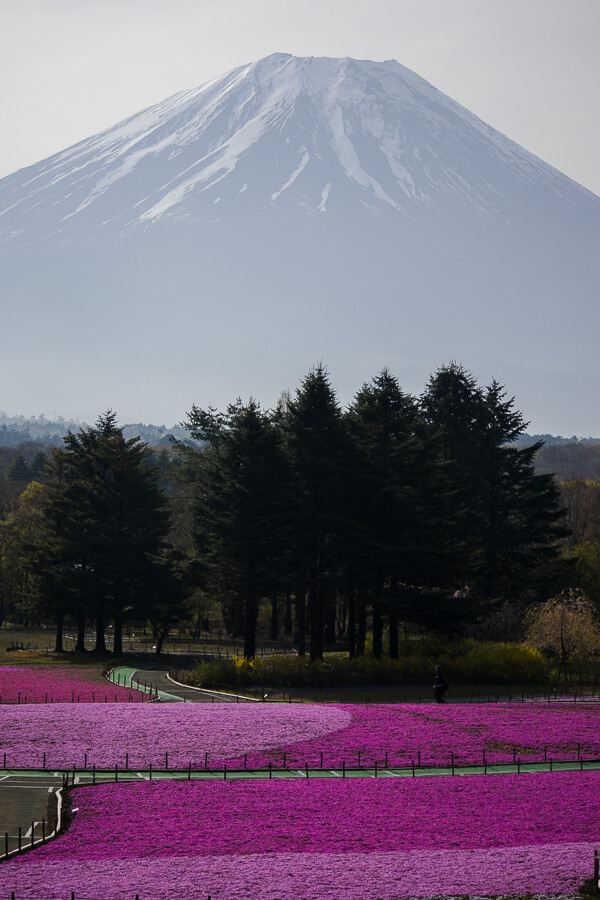
So, Is Japan Expensive?
In summary, I don’t think Japan is expensive to visit – I would consider it on par with a holiday in Australia or places in Europe like Italy or Germany.
In fact, as an Australian, I would consider a week in Tokyo to be much cheaper than a week in London or Paris.
Accommodation and dining will likely be your biggest expenses, and these are things that are fairly easy to manage and find good-value alternatives if you are travelling on a strict budget.
As a 30-something married couple, we don’t do the typical shared dorm room hostel thing these days. We still managed to find great, clean, comfortable and cheap lodging in guesthouses, private hostel rooms and business hotels for $80 – 90 a night, even in cities like Tokyo and Osaka during peak tourist season in April.
There are also so many free and low-cost activities in Japan that balance out against bigger ticket attractions like the incredible theme parks.

How Much Does a Trip to Japan Cost for 2 Weeks
Whilst we spent a month in Japan, most travellers will spend around 2 weeks in Japan. For this length of trip, I would budget $4 – 5k for a couple of mid-range travellers looking to spend 2 weeks in Japan (excluding flights and travel insurance).
Here’s the average cost of a trip to Japan for a typical mid-range traveller:
- Accommodation: $100 – 200 per day
- Food & Drinks: $70 – 120 per day
- Transport: $20 – 40 per day
- Activities & Attractions: $10 – 40 per day
- Total: $200 – $400 per day
Don’t forget to budget for the inevitable shopping you’ll do too!
If you’re heading to the slopes during ski season, expect to pay more as accommodation prices will be higher in the snow and lift tickets are fairly expensive.

Final Thoughts – Cost to Travel Japan
That wraps up this detailed analysis of our EXACT Japan trip cost (can you tell I used to be a data analyst in my former corporate life?!).
I find it really interesting to look back and see all the costs broken down, and I hope this has been helpful to give you an idea of how much to budget for your own trip.
Let me know in the comments below if you have any questions, and don’t forget to check out my other Japan travel guides to help you plan your trip. Happy adventuring!
Japan Itineraries:
- A Fun 7 Day Tokyo Itinerary: Complete 1 Week in Tokyo Guide
- A Perfect 4 Weeks in Japan Itinerary: Ultimate Travel Guide
- An Exciting 4 Days in Osaka Itinerary for First-Timers
- Exploring Fuji Five Lakes: 3 Days in Kawaguchiko Guide
- Takayama Itinerary: 2 Days Discovering Traditional Japan
More Japan Guides:
- How to Plan a Trip to Japan: Ultimate Japan Travel Guide
- 15 Things to Know Before Visiting Japan for the First Time
- 30 Unmissable Experiences for Your Japan Bucket List
- Koyasan Temple Stay: Essential Travel Guide & Tips
- Guide to Visiting the Fuji Shibazakura Festival in 2024
- 10 Best Tokyo Cherry Blossom Spots for Incredible Photos
- Cool Stuff to Buy in Japan: 20 Souvenirs Actually Worth Buying
- How to Easily Visit the Chureito Pagoda from Tokyo
- 10 Most Mesmerising Views of Mt Fuji from Kawaguchiko
